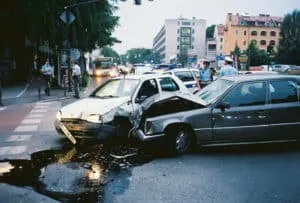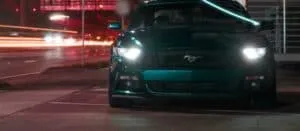Driving in snowy conditions is fun and adventurous for some, but it can be dangerous without the proper precautions. Studies have shown 17% of all traffic accidents in the United States happen during the winter season. Moreover, 24% of weather-related accidents occur on snowy, slushy roads. At Phoong Law, we understand these concerns; therefore, we have put together a few tips to help you drive when it’s snowing.
Gather All the Winter Essentials
Traffic jams aren’t uncommon on icy roads. You can even find yourself stranded in a remote location amidst heavy snowing. Make sure to keep the following supplies handy.
Blankets
Warm clothing is excellent if you’re looking to stay warm for a short time. Still, it doesn’t suffice in freezing temperatures – especially for extended durations. Being stuck in your car in freezing conditions for hours on end can be detrimental to your health. While hypothermia is a concern, some people may also develop heart problems. Make sure you have blankets stacked in your trunk.
Ice Scraper
If you have an old car, chances are the wipers will stop working, thus affecting visibility. Make sure you have an ice scraper to get rid of the ice buildup on the windscreen.
Washer Fluid
Washer fluid helps clean the windscreen and prevents snow accumulation. Never use water to clean your windscreen. Water freezes quickly, affecting your visibility making it difficult to drive.
Jumper Cables
Batteries are likely to go down and leave you stranded, especially in snowy weather. Jumper cables will help you recharge your car’s batteries using the batteries of other vehicles.
Food
To replenish your strength (and keep your morale up), make sure to stack up some trail mix or nuts. Food supplies should be non-perishable, so they don’t go wrong on longer routes.
Flashlight
You should have at least two flashlights with replaceable batteries. They will help you maintain visibility if your car breaks down after sunset.
Flares
LED flares make your vehicle visible in the dark. They help other drivers maintain a safe distance or locate you in the dark if your car breaks down.
Fill Your Gas Tank
Your gas tank should be 50% full when driving in snowy conditions. Some people believe that less gas can freeze in the tank, but that’s not true. Gasoline doesn’t freeze, but it can cause condensation and reduced traction.
Less gas causes condensation in the tank and re-freezes your fuel line, which prevents the ignition process. Moreover, a full or a half-full gas tank is heavier, which increases traction, and makes driving comfortable.
Learn to Get Out of a Snowbank
Getting stuck in a snowbank is not uncommon within the city. However, in a remote location, it can cause panic. Here is what you must do to get out of a snowbank.
- Use a shovel to remove the snow blocking your vehicle’s path.
- Ensure the snow isn’t blocking your windscreen, exhaust pipes, and headlights. When cleaning off the snow, keep the headlight open to be more visible to people.
- Create traction using sand, rocks, or cat litter around your tires. These items will help melt the snow and increase traction.
- Apply the lowest possible gear, and ensure the all-wheel drive is turned on. The more wheels are working, the easier it will be for you to get out of a snowbank.
- Keep the wheels straight. Straight wheels provide more momentum, unlike wheels that are turning.
Winterize Your Car
Check the Tire Tread with the Quarter Trick
Take a quarter coin, and place it directly into the tread of each tire. Your tread is fine if it reaches Washington’s head. If not, you should replace the tires. The coin should ideally be 4/32 inches deep into the tread. If the depth is 3/32 inches, replace the tires soon. For a depth of 2/32 inches, replace the tires right away.
Check Tire Pressure
Checking your tire pressure is necessary for two reasons. First, the gas mileage drops for each PSI (pounds per square inch). Moreover, reduced tire pressure can be dangerous when driving in the winters.
A drop of 5 PSI affects the traction and durability of your tires. Use a pressure gauge to measure tire pressure. If above the desired limit, push the valve to get the air out. If it is below, have your tires inflated as quickly as possible.
Check the Anti-Freeze
Make sure to check the radiator and the coolant reservoir. See if the coolant is above or below the “full” line. If the coolant is below the “full” line, pour a 50/50 mix of water and coolant until it hits the appropriate level.
Check the Engine Oil
Engine oil prevents wear and tear and keeps your engine in top condition. It is essential to change the oil every 3000-5000 miles. When checking the oil, make sure the car is off. Pull out the dipstick, and wipe it with a clean tissue paper or cloth.
Push it back in and see how deep it goes. If the oil level is within the two hash marks or holes, you’re good. If not, make sure to refill the oil as quickly as possible.
Check the Battery
Most car batteries use a liquid electrolyte solution to hold the charge. In low temperatures, the answer isn’t able to transfer full power. Use a multimeter to check the charge on your battery. Attach the black lead to the negative pole, and the red lead to the positive pole to check the reading. If the reading is 75% or more, you don’t need to charge the battery.
Have the Right Tires
Winter tires provide the traction and durability needed to drive on icy surfaces. However, they need to be changed after the winter because they tend to wear down in warmer months. Some people like to drive around with 2 winter tires and 2 all-season tires. Having two different sets of tires is helpful, as you need only to replace two tires, but your car won’t perform well with two different sets of tires.
Moreover, in winter, the all-season tires will wear down quicker. Furthermore, studies have shown winter tires have a 30-40% shorter stopping distance than regular tires.
Avoid Wheel Spin and Wheel Lockup
Wheel spin happens when you accelerate faster than the available traction can handle. The easiest way to avoid wheel spin is by driving an all-wheel car built for off-roading purposes. Moreover, refrain from accelerating too hard, as this will only reduce traction. Remove your foot slowly from the accelerator to regain traction.
Wheel lockup happens when you aggressively apply the brakes on a slippery surface. To avoid a wheel lockup, try not to brake too hard. Aggressive application of the brakes will kill traction, and you can even lose control, which can cause your car to spin out, leading to an accident.
Even if you have to brake suddenly, stagger your use of the brakes – don’t just jam your foot down all at once. Also, you won’t have to deal with wheel lockup if you have an anti-lock brake system (ABS). However, ABS increases the stopping distance in some cases, especially on snowy, slippery surfaces.
Avoid Over and Under steering
Under steer is when your speed is too high to make a particular turn. It occurs when the front two tires of the car lose grip. To avoid under steering, ease off the gas when entering a turn. Next up, very gently hit the brakes. You can make a turn when your speed is gentle enough to help you keep control of the car.
Over steering occurs when a car loses control during a sharp turn. Again, increased speed is the number one cause of over steering. Over steering is common in rear-wheel drives, but it can happen to any car on icy roads, especially when driving too fast.
The simplest way to avoid over steering in a rear-wheel drive is to remove your foot from the gas and take a gentle turn towards your intended direction. For front-wheel and all-wheel drive, remove your foot from the brakes and gently apply the gas when steering.
Some Frequently Asked Questions
What Is Black Ice?
We’ve all heard about black ice, but what is it? Black ice forms when the temperature falls below 32 degrees, and it is raining. Because the temperature of rain is below freezing point, and the surface temperature is below freezing point, the rain tends to freeze upon impact, thus creating a thin layer of ice.
Black ice also forms when the temperature goes a little above the freezing point, and the ice starts melting. Overnight, if the temperature drops below the freezing point, the melted ice freezes again, creating black ice.
Contrary to popular belief, black ice isn’t black. Black ice is the transparent layer of ice on the road, which gives it a shiny black appearance. It occurs when the temperature fluctuates around the 32 degrees mark. Don’t apply the brakes impulsively if you hit some black ice, as this will cause your car to lose traction and spin out. Try shifting to the lowest gear for more traction if you drive a manual car.
Furthermore, if you want to avoid anything nasty, drive over the black ice without over steering. If you lose control, apply the brakes gently. Traction will return once you cross the black ice.
What If I’m in an Accident?
If you have been in an accident while driving in snowy conditions, call the police to inform them about the accident. If you have been injured, bring them to the police’s attention because you may need immediate medical treatment.
Make sure you note down the name and badge number of the officer you speak to. Also, don’t accept the blame for the car crash right away. If your car is relatively undamaged, stay in your vehicle to keep warm. Try to make yourself visible, so the police can locate you upon arrival.
While waiting for the police, turn on the headlights and use flares. For extra visibility, especially after dark, you can wrap yourself up in a reflective blanket. Make sure to take pictures of your car, as well as the visible injuries you have sustained.
Documented evidence will help you take legal action against the other driver. After the police help you out, get yourself checked for injuries. Some injuries aren’t visible, and they become more complex with time.
Do You Have a Claim?
After an accident, you need to file for compensation, as discussed above. Suppose you, your vehicle, or any pedestrian on the road was hurt during an accident. In that case, you should contact a car accident lawyer or a personal injury lawyer in California.
If there are no visible signs of injury at the moment, it doesn’t mean they won’t show up later. Get yourself checked for injuries, and share your x-rays and other reports with the personal injury lawyer. Also, share the pictures you captured at the time of the accident with them.
When hiring a personal injury lawyer in California:
- Please don’t fall for their ads on TV, newspapers, and social media. Instead, use tools like Yelp to look for reviews about the attorney you want to hire. Also, search for their ratings, as well as their winning ratios.
- See where they get their cases from. Don’t hire a personal injury lawyer that gets cases from advertisements. Instead, hire the one that their previous clients refer.
- Make sure to check the portfolio before hiring a personal injury lawyer. Personal injury lawyer layers deal with rear-end collisions, golf-cart accidents, drunk driving accidents, dirt bikes, and animal attacks. It is better to hire an attorney with a broader portfolio.
- Do they work digitally, or do they have large piles of paper here and there? Law firms that function digitally are more efficient and accurate.
- Stay away from lawyers that demand payments upfront or present you with a list of costs during the first meeting.
The Final Word
At Phoong Law, we understand the difficulties of driving on an icy road. If you have recently been in a winter car accident, we are sorry to hear that. If you are looking for a personal injury lawyer in California, you have come to the right place. To benefit from our services, visit our contact page today.
























